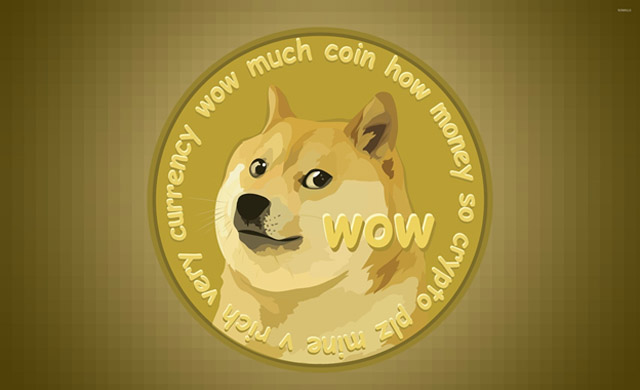Dogecoin’s origin dates back to 2013, driven by three main figures: Jackson Palmer, a software engineer and marketing analyst; Billy Markus, a software developer; and Shiba Inu. During the initial cryptocurrency surge, Palmer introduced Dogecoin as a satirical take on the growing frenzy around digital currencies. After joking on Twitter about launching a new cryptocurrency called “Dogecoin” based on the popular meme, the idea was so well-received that Palmer went on to purchase the domain dogecoin.com.

On the other side of the world, Billy Markus, an IBM software developer, had been exploring the idea of creating a new digital currency. Upon discovering dogecoin.com, he reached out to Palmer, proposing a collaboration. This marked the birth of DOGE.
Within a month of its debut, Dogecoin.com attracted over a million visitors, and by January 2024, DOGE’s trading volume temporarily exceeded that of Bitcoin and all other cryptocurrencies combined. However, by 2015, the initial excitement surrounding Dogecoin had faded, and the project remained relatively quiet for the next several years.
Then, in 2021, the landscape shifted dramatically. A renewed interest in cryptocurrencies placed Dogecoin back in the spotlight. Elon Musk’s playful endorsements, in which he called Dogecoin his favorite cryptocurrency, fueled a surge in its value, propelling it into the top five cryptocurrencies by market capitalization.

Important Fundamental Metrics
Daily Active Users (DAU): Data from IntoTheBlock reveals that Dogecoin maintains over 43,000 daily active users. Although there have been occasional spikes in activity over the past year, its DAU has generally remained stable around the 40,000 mark, with no significant upward or downward trends.
Fees and Revenues: Dogecoin’s revenue primarily comes from transaction fees, which users pay to miners for processing and validating transactions on the network. However, with a high emission rate of 10,000 DOGE per block generated every minute, relying solely on transaction fees may not be sufficient to sustain miner incentives in the long run.
Market Cap: Over the past year, Dogecoin’s market capitalization has risen from roughly $10 billion to $18 billion, reflecting an 80% growth. Compared to other memecoins, Dogecoin’s market cap remains substantially larger, almost twice the size of its nearest rival, Shiba Inu, which holds a market cap of approximately $9.8 billion.
Market Analysis
The problem it addresses: Dogecoin fulfills the demand for an entertaining, easy-to-use, and affordable cryptocurrency for online tipping and microtransactions. Despite this, its value is largely fueled by its community and cultural relevance rather than groundbreaking technological advancements.
Customers: The typical Dogecoin buyer consists of internet users, members of social media communities, and cryptocurrency enthusiasts who appreciate its humor and novelty.
Value proposition: Dogecoin promotes itself as a convenient currency by offering faster and cheaper transaction processing compared to Bitcoin. However, the number of merchants currently accepting Dogecoin remains quite limited.
Market Size: Estimating Dogecoin’s potential market size is challenging, as it has exceeded its initial reputation as merely a memecoin. In 2024, the daily trading volume has averaged close to $1.4 billion. With the continued expansion of the broader cryptocurrency market, there is a chance that Dogecoin will also experience further growth.
Token Mechanics
How appealing is Dogecoin to long-term investors, and is the token essential? DOGE serves as the core product of the project, primarily functioning as a payment and tipping currency aimed at generating positive engagement.
Value Proposition: DOGE holds a unique position as the first of its kind. Initially conceived as a playful, nonsensical Bitcoin clone, its narrative has since evolved into “the accidental crypto-movement that makes people smile.”
Decentralization: While Dogecoin operates as a decentralized currency, it does have a core team guiding its development through a plan known as the Trailmap.
Token Supply: DOGE’s total supply is uncapped, with 145 billion tokens already in circulation. As new tokens are continually minted, the overall supply increases, which dilutes each individual’s share of the total supply.
Public Exchange: DOGE is available on major exchanges such as Binance, Coinbase, and Kraken, making it easily accessible for traders and investors.
Conclusion
Dogecoin’s lighthearted origins and meme-driven culture have garnered a dedicated fanbase, establishing it as one of the most recognizable cryptocurrencies worldwide. High-profile endorsements, particularly from figures like Elon Musk, have helped push Dogecoin into the mainstream. However, its high emission rate of 10,000 DOGE per block and an unlimited token supply can lead to inflation, potentially diminishing its long-term investment appeal. As a memecoin, Dogecoin’s price and popularity are largely shaped by social media trends and celebrity backing, resulting in volatility and making it prone to sharp price fluctuations driven more by public sentiment than by inherent value.
Learn from market wizards: Books to take your trading to the next level

 Hot Features
Hot Features













